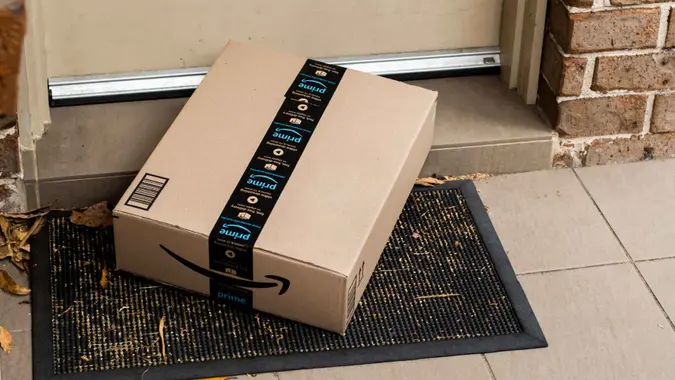5 Grocery Items To Avoid While on a Retirement Budget

Commitment to Our Readers
GOBankingRates' editorial team is committed to bringing you unbiased reviews and information. We use data-driven methodologies to evaluate financial products and services - our reviews and ratings are not influenced by advertisers. You can read more about our editorial guidelines and our products and services review methodology.

20 Years
Helping You Live Richer

Reviewed
by Experts

Trusted by
Millions of Readers
One thing seniors learn how to do early in their retirement is to live on a budget, mainly because they have no other choice. Your retirement years often mean getting by on a fixed income or Social Security benefits, without the possibility of work bonuses, raises or better-paying jobs to provide a financial boost. This requires knowing not only what to spend your money on every month but also what not to spend your money on.
The past few years have not been as kind to retirees and their consumer expenditures. The U.S. inflation rate has leveled out but groceries and general food costs remain one of the biggest price hikes overall.
Quick Take: Grocery Inflation 2025
Food is a big part of your monthly budget, especially when it comes to allocating and spending your retirement money. Food costs and inflation vary by location and whether the food was purchased for consumption at home or away from home. Here are some key takeaways from some potentially unexpected costs when it comes to your grocery bill in 2025:
- The grocery bill and supermarket food purchase Consumer Price Index (CPI) decreased 0.1% from October 2024 to November 2024
- The restaurant spending CPI increased by 0.3% in November 2024
- In 2025, prices for all food items are predicted to increase by 1.9% with food-at-home prices (groceries) predicted to increase by 0.8%, and food-away-from-home takeout/restaurant) prices predicted to increase by 3.5%
Now it’s time to dig into how inflation is impacting average retirees at the grocery store.
Check Your Grocery List Twice in 2025
Grocery price inflation will continue to level out in 2025. Andy Harig of The Food Marketing Institute told Supermarket News, “On a year-over-year basis, inflation for food at home was 1%, a strong figure that should encourage consumers.”
When it comes to budgeting for groceries, one of the best moves you can make is to strategize over what to buy — and when. As Reader’s Digest noted, you can save money when you buy certain items in season. For example, here are the best times to buy certain fresh fruits:
- Spring: Kiwi, pineapples, strawberries
- Summer: Blackberries, blueberries, cantaloupe, cherries, honeydew melon, peaches, plums, raspberries, strawberries, watermelon
- Fall: Apples, cranberries, grapes, pears, raspberries
- Winter: Grapefruit, kiwi, oranges
These are the best times to buy fresh vegetables:
- Spring: Asparagus, lettuce, mushrooms, peas, spinach
- Summer: Beets, bell peppers, corn, cucumbers, eggplant, green beans, summer squash, tomatoes, zucchini
- Fall: Brussels sprouts, cauliflower, parsnips, sweet potatoes/yams, turnips
- Winter: Kale, leeks, rutabagas, sweet potatoes and yams, swiss chard, turnips, winter squash
Because fresh fruits and vegetables are so important to a healthy diet, you don’t want to avoid buying them, even when focused on expenses in a retirement budget. However, you might want to avoid buying them out of season due to price trends.
Here’s a look at five grocery items to avoid on a retirement budget, based on the most recent price increases cited by the Bureau of Labor Statistics:
- Beef: Up 3.8%
- Fish: Up 3.8%
- Poultry: Up 3.8%
- Eggs: Up 3.8%
- Non-alcoholic beverages: Up 2.8%
Final Take To GO: Income in Retirement vs. Living Expenses
The bottom line is that when you break down your sources of income in retirement, they should be able to cover your monthly bills, food costs and unexpected expenses. It’s always a good idea to check the price tag of necessary expenses like groceries, and how they will change from year to year.
Vance Cariaga contributed to the reporting for this article.
More From GOBankingRates
 Written by
Written by  Edited by
Edited by 

























